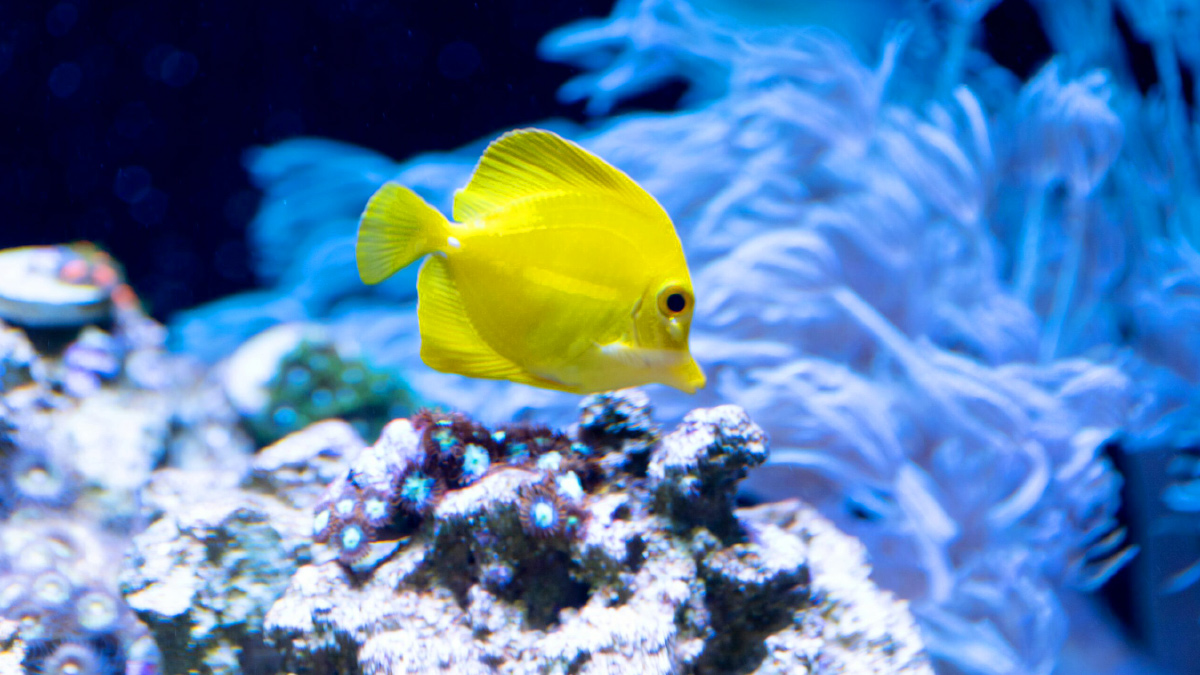Source: oceanographicmagazine.com
The Walt Disney Company's Aulani Resort Rainbow Reef is among the partnerships harnessed by Oceanic Institute Hawai'i Pacific University to release 300 yellow tang fish into Oʻahu waters in a 'milestone' coral reef restoration event.
You’d be forgiven for thinking that the Walt Disney Company’s relationship with the ocean began with The Little Mermaid and ended when everyone Found Nemo… (or perhaps that should be Dory?), but this would underestimate the critical role the studio has played, recently, helping local communities of Hawaiʻi reach a significant milestone in coral reef restoration.
Last week, over 300 aquacultured juvenile yellow tang – both an icon and ambassador of Hawaiian marine life, and a favoured resident of the Disney Aulani Resort Rainbow Reef – were introduced to the waters of Oʻahu, in what was the first documented release of fish in Hawaiʻi aimed specifically at ecosystem restoration. Until now, all documented fish releases within the state had been done so with the objective of replenishing fish stock for consumption. The fact that this latest release targets coral restoration specifically, marks a significant step forward in preserving Hawaiʻi’s marine ecosystems.
Leading this project – one that has been billed an ‘historic milestone’ for the US state – was the Oceanic Institute (OI) of Hawaiʻi Pacific University (HPU) and its partners, Georgia Aquarium and The Walt Disney Company’s Aulani Resort. In preparation for the release, a biologist from the Hawaiʻi State Department of Land and Natural Resources (DLNR) inspected the juvenile yellow tang shortly ahead of the moment itself, ensuring they were free of any pathogens and thereby safeguarding the local reef ecosystem.
In fact, the project’s focus on ecosystem health showcased a ‘novel model for reef restoration’ in Hawaiʻi and one that has now highlighted the potential for aquaculture to play a “vital role in marine conservation.”
“The release of these iconic coral reef fish into our nearshore waters represented an historic, watershed moment for OI, HPU, and the State of Hawaiʻi,” said OI’s executive director, Shaun Moss Ph.D. “This represents a tremendous opportunity to add another important tool in our collective toolbox to protect our coral reefs for future generations.”
The moment of the fish’s release was a culmination of years of dedicated research and partnership.

Through extensive trials, researchers at OI first succeeded in producing fertilised eggs in captivity. However, it wasn’t until years later – after a decade of study – that scientists finally identified the specific plankton needed to sustain baby yellow tang through their juvenile stages – an approach that provided the first sustainable alternative to wild-caught yellow tang for the aquarium trade.
It was then with financial support from Georgia Aquarium, OI partnered with Disney’s Aulani Resort Rainbow Reef Aquarium to harvest and transport fertilised eggs from their exhibit tanks to OI’s facilities. A surplus in yellow tang production allowed OI to expand conservation efforts beyond aquarium display, and with the approval of the DLNR, the OI released its aquacultured fish into the wild. It’s a move that has now provided the coral reef with what are considered ‘natural grazers’ to control the growth of algae and support greater biodiversity in the ocean space.
With an estimated $33 billion in value, Hawaiʻis coral reefs contribute around $800 million a year to the local economy, supporting food resources, medicine, storm protection, and tourism while holding deep cultural significance. Despite this, threats from climate change, pollution, and invasive species have increasingly jeopardized their survival. As herbivores, yellow tang play a vital role in coral reef health by controlling algae, preventing it from overwhelming the coral and promoting coral growth and resilience.
“The fish in Aulani Resort’s Rainbow Reef essentially act as ambassadors to Hawaiʻi,” said Rafael Jacinto, animal and water sciences operations manager at Aulani, a Disney Resort and spa. “Every day they help educate our visitors about their fragile reef environment and the actions we can take to protect them. Through this programme, we are happy to be playing a role in continuing their sustainability message beyond Aulani Resort, into other aquariums, and now back into the ocean.”
The milestone release took place on November 2, coinciding with a gathering of the Waimanalo Limu Hui, a community organisation focused on restoring native limu (seaweed) in Waimanalo Bay. Hui volunteers outplanted limu after the release by a crafting limu lei and submerging them on rocks. In a gesture symbolising respect, Ikaika Rogerson, president of the Waimanalo Limu Hui, offered limu lei to Kanaloa, the Hawaiʻin god of the sea.
The event will be used to demonstrate how aquaculture can directly support reef health and serve as a model for future restoration efforts across Hawaiʻi. Through this initiative, OI and its partners have set a foundation for using ecosystem services to preserve Hawaiʻis coral reefs for generations to come.
Aulani, a Disney Resort & Spa
92-1185 Aliinui Dr, Kapolei, HI 96707
Visit: disneyaulani.com
